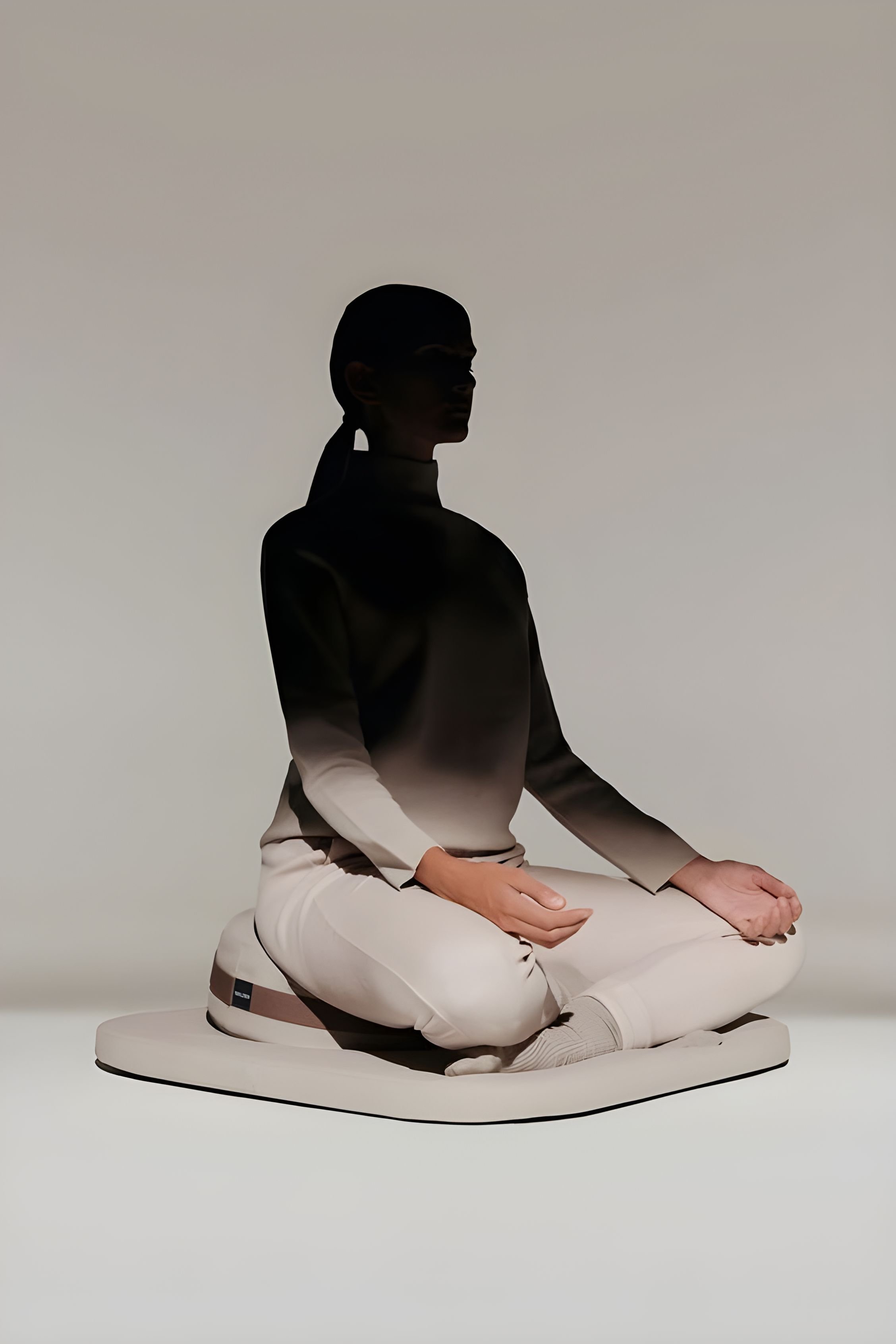EduZen
Educational Mobile App Prototype — November, 2023
Make it stand out.
Project Timeline Contributors My Role
4 weeks Gaurie Thappar, Designer/Tester Project Lead/ Visual Design
Sarah Lewalski, Researcher
Mobile App user flow animation.
Discover
Eduzen is a mindfulness app prototype crafted for students' unique needs.
↗ User Research & Discovery: We set out to deep-dive into how the student community approached mindfulness and their pain points around using meditation/mindfulness apps. We conducted semi-structured interviews with 3 PhD students from Penn State University via snowball sampling. Given the tight timeline we limited our participant pool.
Define
Key Findings:
↗ Accessibility Barriers: Many students expressed a desire for mindfulness content that was easily accessible and tailored to their busy schedules.
↗ Engaging Content: While students recognized the benefits of mindfulness, they found existing resources to be dry or lacking in captivating elements.
↗ Practical Application: Participants highlighted the need for resources that went beyond theoretical knowledge and provided practical guidance on incorporating mindfulness into their daily routines.
Based on student insights, three personalized mindfulness programs based on their preferences & goals were integrated.
↗ Based on user feedback, we iteratively refined the wireframes, making necessary adjustments to enhance usability, clarity, and overall user experience. This iterative process involved multiple rounds of revisions, ensuring that we addressed all concerns and optimized the app's design.
I didn't find it very relatable. The scenarios they used for mindfulness examples were nothing like my real-world situations at work or home.
— Erin
↗ The process of selecting the color palettes involved user testing and feedback loops.
↗ By gathering insights from potential users, we refined the color choices to better align with their preferences and emotional responses.
↗ Iterative design processes like this help create a more user-centric and engaging experience.
↗ We aimed to evoke specific moods and emotions that align with the modules’ purpose.
↗ For instance, earthy/calming shades of beige and green were used for meditation modules to promote relaxation, while B&W was employed for modules focused on energy and motivation — fostering a sense of sophistication.
Lastly, access to curated content recommendations enriched the user experience.
Outcome — Through iterative refinement guided by user feedback, we developed a prototype that can potentially enhance…
\
Learning
↗ Pre and post-test scores: Compare average test scores before and after using the prototype to measure learning gains.
↗ Concept mastery: Percentage of students demonstrating mastery of key concepts through assessments or project work.
↗ Skill development: Rubric scores evaluating improvement in targeted skills (e.g. critical thinking, problem-solving) before and after using the prototype.
Develop
The app gave me all these mindfulness exercises, but no guidance on how to apply it to my actual life and daily stresses.
— Ruby
❝
❞
Interactive Learning Modules & Community Support were implemented.
Enagagement
↗ Usage data: Track user engagement through metrics like time spent, activities completed, revisits etc.
↗ Participation rates: Percentage of users actively participating in discussions, collaborations or other interactive elements.
↗ Qualitative feedback: Include specific user comments highlighting increased motivation, interest or engagement with the prototype.
Satisfaction
↗ User surveys: Include survey results measuring user satisfaction with the prototype on aspects like usability, content quality, engagement etc. Highlight positive ratings and feedback.
↗ Net Promoter Score: Calculate the Net Promoter Score based on the likelihood users would recommend the prototype.
↗ We translated findings from a low-fidelity prototype into a set of comprehensive wireframes. These wireframes served as a blueprint, outlining the app's structure, information architecture, and user flow. We meticulously crafted each screen, ensuring a logical and intuitive navigation experience for the students.
Through user interviews, we discovered that students were missing accessible captivating content that was educational yet served as a training ground for practicing mindfulness.
After iterating on a low-fid prototype, we translated them into wireframes.
Wireframes
Deliver
See Wireframe on Figma
We then tested the wireframes with 3 students to incorporate insights and refine them — leading to a hi-fid prototype.
↗ This step allowed us to validate our design decisions and gather valuable feedback from potential students. We observed how they interacted with the wireframes, identified pain points, and noted areas for improvement.
In the vast sea of information available online, curated content plays a vital role in delivering a personalized and relevant experience to users. By carefully selecting and organizing high-quality resources, we aimed to:
↗ Save time
↗ Enhance engagement
↗ Establish trust
↗ By implementing features such as community support, real-time mood tracking & personalized reminders, we successfully fostered a sense of connection & accountability among students.
Each module has its unique color palette, facilitating seamless user navigation.
As a Project Lead/Visual Designer, my responsibilities spanned initial concept & prototyping — encompassing preliminary research, crafting wireframes, visual design, and driving the prototyping phase.
Next Project ⸻






















